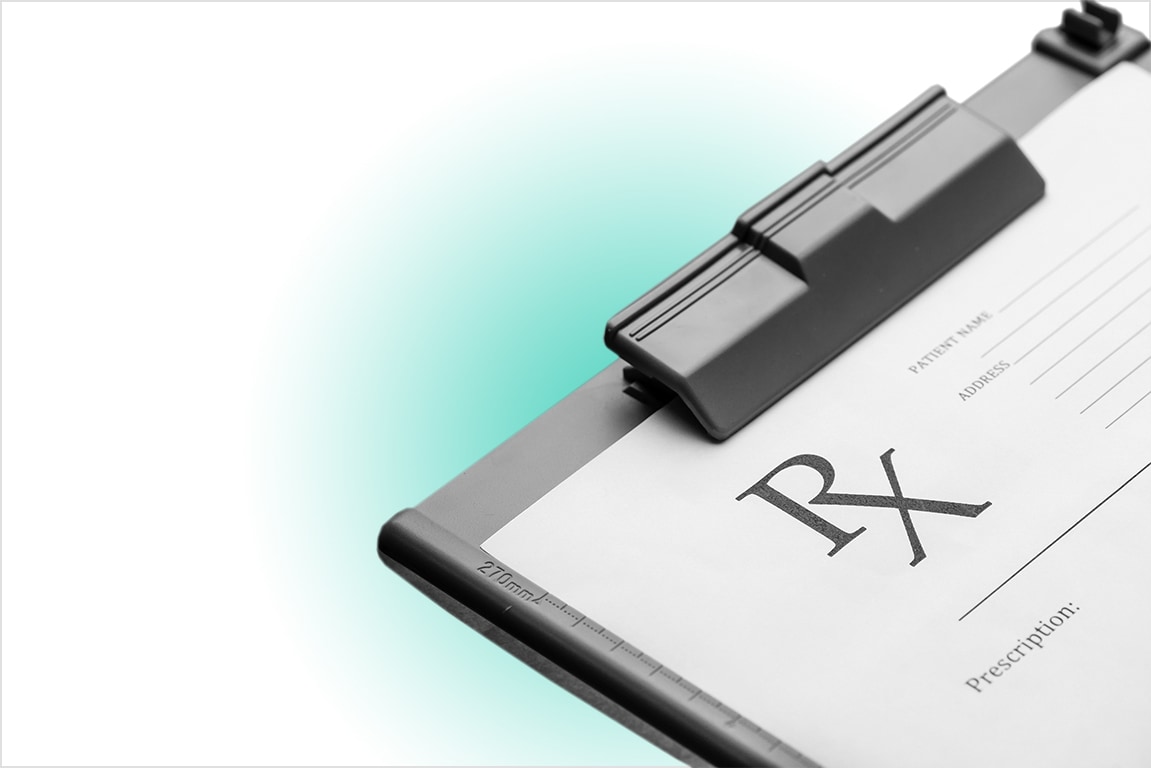Initiating Opioid Therapy
- Determining Whether or Not to Initiate Opioids for Pain
- Acute Pain
- Subacute and Chronic Pain
- Nonopioid and Nonpharmacologic Therapies
- Selecting Opioids and Determining Opioid Dosages
- Assessing Risk and Addressing Potential Harms of Opioid Use
- Review Patient Medication History
- Conduct Toxicology Testing
- Use Caution When Prescribing Concurrent Opioid Medications and Other Central Nervous System Depressants
This page provides an overview for initiating opioid therapy. Please review the 2022 CDC Clinical Practice Guideline for Prescribing Opioids for Pain (2022 Clinical Practice Guideline) for more detailed guidance.

Initiating opioids refers to when clinicians prescribe opioids for acute, subacute, or chronic pain to patients who have not previously been receiving opioid therapy for the painful condition. For clinicians who are interested in learning more about treating patients who are already taking opioids for acute, subacute, or chronic pain, please visit Continuing Opioid Therapy.
Consider opioid use for acute, subacute, and chronic pain only if benefits can outweigh risks to the patient.
Opioids can be used when benefits for pain and function are expected to outweigh the risks for opioid use. When initiating opioid use, clinicians should prescribe and advise opioid use only as needed.

Involve patients in decisions about whether to initiate opioid use, including discussing the benefits and risks for starting or continuing opioid therapy. Whenever opioids are prescribed, clinicians and patients are encouraged to have an “exit strategy” to employ if the treatment is unsuccessful in improving pain and pain-related function or the risks for opioids outweigh the benefits.
- Acute Pain: Duration of less than 1 month
- Subacute Pain: Duration of 1-3 months
- Chronic Pain: Duration of greater than 3 months
Before initiating opioid therapy, ensure patients are aware of the following factors:
- Expected benefits of opioids
- Common risks of opioids
- Serious risks of opioids
- Alternatives to opioids

Opioid medications can play an important role in treating acute pain related to:
- Severe traumatic injuries (including crush injuries and burns).
- Invasive surgeries typically associated with moderate to severe postoperative pain.
- Other severe acute pain when nonsteroidal anti-inflammatory drugs (NSAIDs) and other therapies are contraindicated or likely to be ineffective.
Clinicians should evaluate patients to assess the benefits and risks for opioids at least every 2 weeks.
When diagnosis and severity of acute pain warrant the use of opioids, clinicians should:
- Prescribe immediate-release opioids (Recommendation 3 in the 2022 Clinical Practice Guideline),
- At the lowest effective dose for patients (Recommendation 4), and
- For no greater quantity than needed for the expected duration of pain severe enough to require opioids (Recommendation 6).
If opioids will be taken continuously (around the clock) for more than a few days, clinicians should create and discuss an opioid tapering plan with their patient.
Opioids should not be considered first-line or routine therapy for subacute or chronic pain. However, in some clinical contexts, opioids might be appropriate regardless of previous nonpharmacologic and nonopioid pharmacologic therapies used. For example, a patient with a serious illness that has a poor prognosis for return to their previous level of function. In other situations (e.g., headache or fibromyalgia) the expected benefits of initiating opioids are unlikely to outweigh risks regardless of previous therapies.
Upon initiating opioid use for subacute and chronic pain, clinicians should:
Evaluate patients and establish or confirm the diagnosis to guide patient-specific selection of opioid therapy.
Work with patients to establish treatment goals for pain and function.
Recognize that patient education and discussion before starting opioid therapy are critical so that patient preferences and values can be understood and used to inform clinical decisions.
Consider how opioid therapy will be discontinued if benefits do not outweigh risks.
Nonopioid therapies are preferred for subacute and chronic pain and are at least as effective as opioids for many common types of acute pain (Recommendations 1, 2).
Clinicians should maximize the use of nonpharmacologic and nonopioid pharmacologic therapies as appropriate for the patient and specific condition.
| Nonopioid pharmacologic treatment examples | Nonpharmacologic intervention examples |
|
|

When initiating opioids for patients with acute, subacute, or chronic pain, clinicians should:
- Prescribe the lowest effective dosage for opioid-naïve patients.
- Prescribe immediate-release opioids instead of extended-release/long-acting (ER/LA) opioids.
- Reserve ER/LA opioids for severe, continuous pain and only consider for patients who have received certain dosages of immediate-release opioids for at least one week.
For more information on dosages, please review the 2022 Clinical Practice Guideline.
The 2022 Clinical Practice Guideline recommendations, including those related to opioid dosages, are not intended to be used as an inflexible, rigid standard of care; rather, they are intended to be guideposts to help inform clinician-patient decision making.
Please see Recommendation 4 for additional guidance.

Before starting and periodically during continuation of opioid therapy, clinicians should evaluate risk for opioid-related harms and discuss with patients (Recommendation 8). Clinicians should work with patients to create a management plan that incorporates strategies to mitigate risk, including offering naloxone.
For more information and resources about talking with patients, family members, friends, and caregivers about naloxone, visit Naloxone Can Save Lives.
When initiating opioids for chronic pain for patients with a substance use disorder, clinicians should:
- Discuss increased risks for opioid use disorder and overdose.
- Consider whether the benefits of opioids outweigh increased risks.
- Incorporate strategies to mitigate risk into the management plan, such as offering naloxone and increasing the frequency of monitoring.
For more information on opioid use disorder, visit: Opioid Use Disorder: Preventing and Treating.
Clinicians and their teams can provide education on overdose prevention and naloxone use to patients and offer education to members of patients’ households. View the library of CDC’s resources here: Naloxone Fact Sheets.

When prescribing initial opioid therapy, clinicians should review the state prescription drug monitoring program (PDMP) data for prescription opioids and other controlled medications patients have received from additional prescribers to determine the total amount of MME prescribed and to assess if the total dosage or combinations (e.g., opioids combined with benzodiazepines) put the patient at high risk for overdose.
Clinicians should use specific PDMP information about medications prescribed to their patient in the context of other clinical information, including patient history, physical findings, and other relevant testing, to help them communicate with and protect their patient. Learn more about PDMP programs here.
When prescribing opioids for subacute or chronic pain, clinicians should consider the benefits and risks for toxicology testing, such as urine drug screening, to assess for prescribed medications as well as other prescribed and non-prescribed controlled substances that increase risk for overdose when combined with opioids, including nonprescribed and illicit opioids and benzodiazepines.
Before ordering toxicology testing, clinicians should have a plan for responding to unexpected results. Clinicians should explain to patients that the results will not be used punitively (e.g., to dismiss patients from care) and that testing is intended to improve their safety.
Use Caution When Prescribing Concurrent Opioid Medications and Other Central Nervous System Depressants
Clinicians should use particular caution when prescribing opioid medications and benzodiazepines concurrently. Clinicians should also consider whether the benefits outweigh the risks for concurrent opioid prescriptions and other central nervous system depressants such as:
- Muscle relaxants
- Non-benzodiazepine sedative hypnotics
- Potentially sedating anticonvulsant medications such as gabapentin and pregabalin
Clinicians should check the PDMP for concurrent controlled medications prescribed by other clinicians and consider involving pharmacists as part of the management team when opioids are co-prescribed with other central nervous system depressants.
For more information about the 2022 Clinical Practice Guideline, visit What’s New, What’s Changed.
Disclaimer: This webpage provides a high-level overview of initiating opioid therapy. For in-depth information and implementation considerations of the guidance, you are encouraged to read the full 2022 Clinical Practice Guideline for Prescribing Opioids for Pain.
